Volkswagen recently celebrated six decades of production at its purpose built VW Hannover factory in Germany (we blogged about it here) – and there’s an interesting story behind the plant that has produced six generations of the VW Transporter…
It started with a sketch…
The Bus concept was first thought up by Dutch businessman Ben Pon, who was acting as an agent for VW at the time. He was actually the first person to export a Beetle outside of Germany. Pon famously did a sketch of a boxy commercial vehicle back in 1947 but it wasn’t until May 1949 that Volkswagen MD Heinz Nordhoff gave it the go ahead. The Type 2 went into production at Wolfsburg on 12th November 1949, although just eight examples had been built by the end of the year. Manufacture got going in the new year and VW built 8,509 vehicles by the end of 1950 but, with emphasis on the growing market for the Beetle, only a small fraction were Transporters. Nonetheless, Bus orders kept coming, and despite 242,373 vehicles being built at Wolfsburg in 1952, just 40,199 were Type 2s. With so much of the factory set aside for Beetle production, just 80 Buses could be made a day and to make matters worse, the Transporter was offered in 30 different variations which did nothing for the logistics.
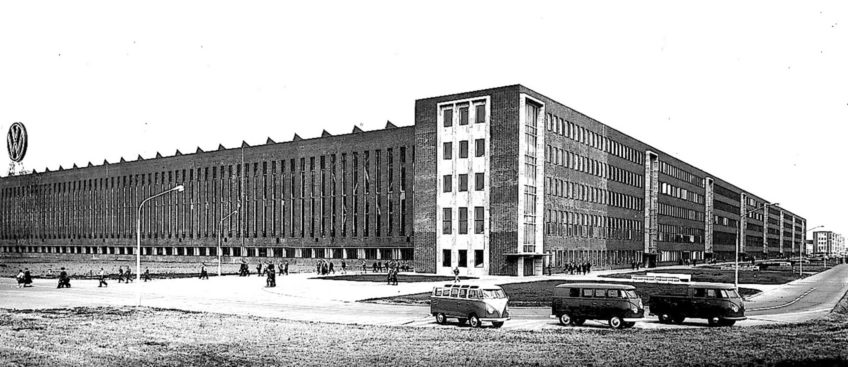
It soon became clear that a dedicated Transporter production facility was needed, but the question was where to build it? Offers came flooding in from cities and towns throughout West Germany all keen to benefit from the huge income the new factory would bring. One such offer came from Stöcken near Hannover, and with its large railway yard on one side and the Mittelland Canal which ran to Wolfsburg on the other, it was perfect.
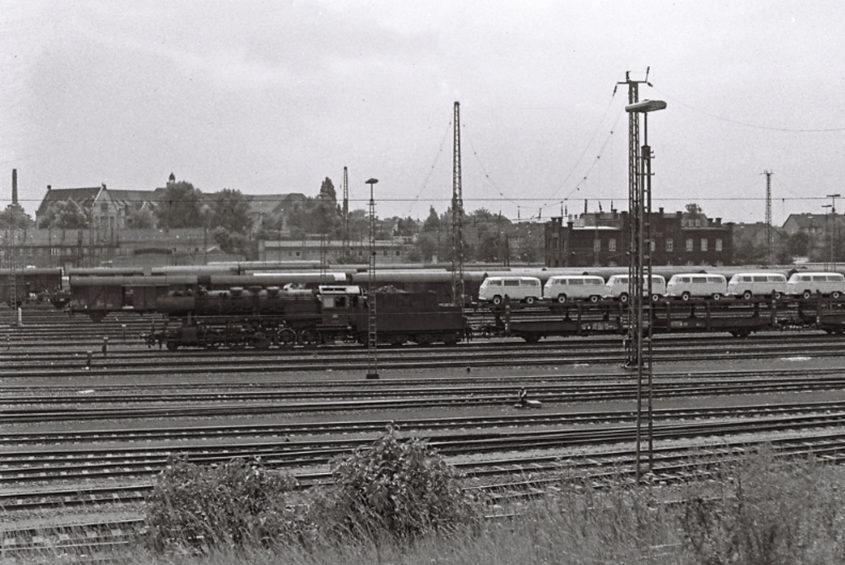
First stone laid in 1955
Outside, the new factory was to have visual similarities with Wolfsburg with its characteristic saw tooth roof – all of the architectural work was carried out in-house by the VW Building Design Department. Nordhoff laid the foundation stone on March 1, 1955, but it was a rather different affair to the one seen at Wolfsburg in May 1938 when Hitler laid the foundation stone in front of 80,000 people. This time the much smaller crowd was mostly made up of employees and builders and the ground had a covering of snow.
The frosty conditions were to hinder things later on because as the winter thaw kicked in the site became a mud bath, which in turn resulted in construction lorries becoming stuck and the need for purpose built access roads. Due to the sheer scale of the construction, various temporary buildings were erected as site offices and housing for the workers. After three months the workforce had grown to 2,000, 30 cranes were on site working around the clock and cement mixers churned out 5,000 cubic meters of concrete per day to create 600,000 square slabs. A mind-boggling 256,000 truckloads of earth were removed from the site in total.
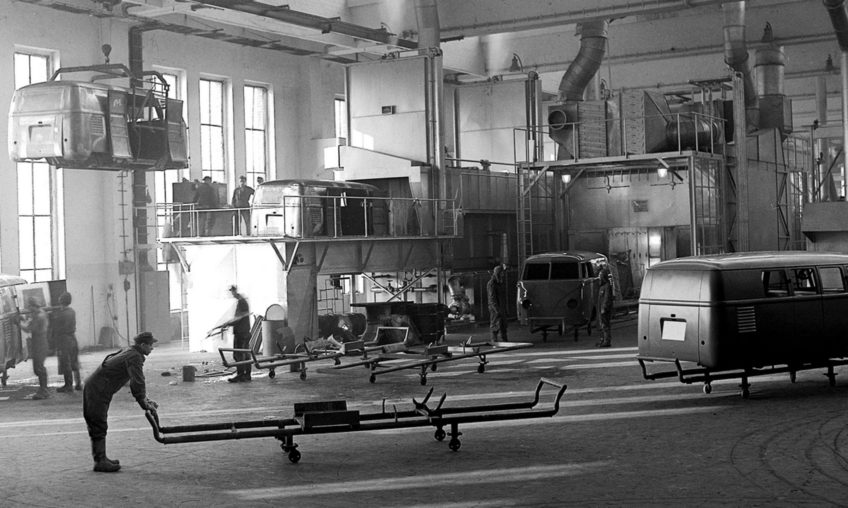
Locals trained and ready to build buses!
With the new factory well underway, Volkswagen turned its attention to the workforce, employing 3,000 people locally, long before the new plant was completed. They even paid for dedicated train services to transport the new workers from Hannover at 4am to the Wolfsburg station directly outside the factory. The new workers were trained up on the Type 2 production line so when the new factory was finished they would already be up to speed.
By February 1956 the building was virtually finished. Externally, logistical essentials such as the 10km of railway had been laid to provide connection directly into the plant. On 8th March 1956, the first test of the new VW Type 2 Transporter production line was carried out and full series production began on 20th April with 250 Type 2s being produced per day. This soon rose to 300 units, and by the end of the year 62,500 vehicles had been made at Hannover. By 1962 as the One Millionth Type 2 rolled of the production line, 700-800 Buses were being made every day.
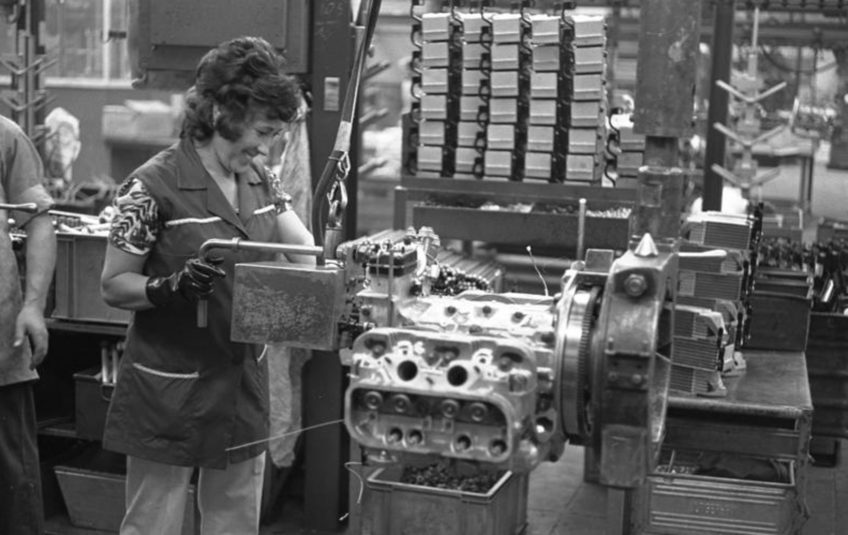
Engine plant within the VW Hannover factory
As well as churning out Buses, VW made the decision to build a new factory within the Hanover confines specifically to build air-cooled engines, Type 1 front suspension and rear transaxles along with Type 2 front ends. Work started on ‘Hall 2’ on 20th October 1957 and once the new building had been added, the combined frontage was now close to being half a mile in length. The engine production lines made 1,000 engines everyday, most of which were destined for Wolfsburg and transported by rail. The complete Type 1 front and rear end assemblies were also transported by rail to Wolfsburg. Hall 2 went on to produce not only the Type 1 engine, but also Type 3 ‘pancake’, Type 4 and later water-cooled engines, including the T25 Wasser-Boxer.
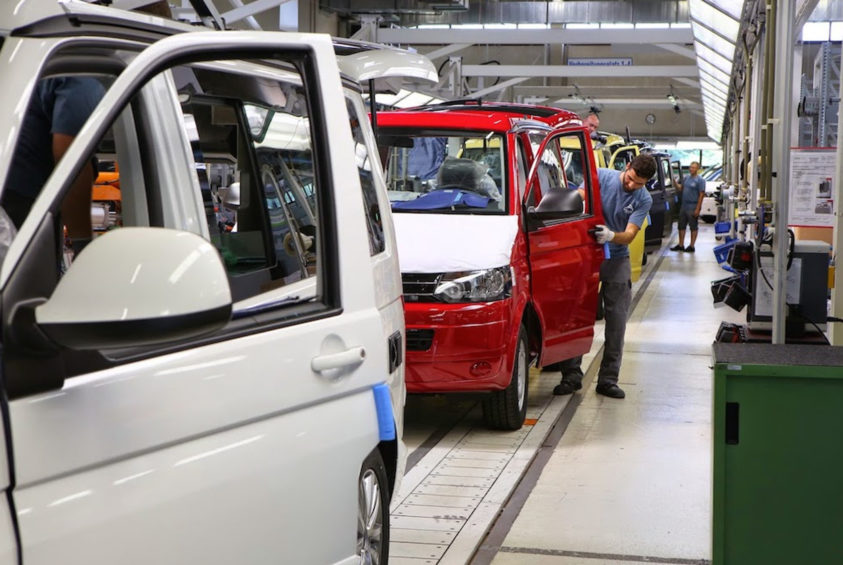
In July 1967, during the annual factory holiday closure, Hall 1 and 2 at Hanover was re-tooled ready for production of the new Bay Window and by 1968 production of the Type 2 passed Two Million vehicles. In 1980 the Bay was replaced by the Type 25, and by 1981 the factory had built 5 million Buses. In 1990 the front wheel drive the T4 Transporter entered production, followed by the T5 in 2004, the T5.1 in 2009 and the T6 from 2015. Along with the VW Type 2, VW Hannover has made the VW Load Transporter (LT), Taro Pick-Up, 26,531 Type 181s, 2600 Basistransporter CKD kits, MAN Trucks and today the Amarok and the bodies of Porsche Panameras.
Ian
The opinions expressed here are the personal opinions of the author and do not necessarily represent the views and opinions of VW Heritage.


I’ve owned Volkswagens since 1972, in a Volksagen Car Club since 1973, sold Volkswagens for a couple of years, visited the Wolfsburg plant, visited Autostadt and wish I had gone to this factory when I was in Germany. It could be on the list for my next trip to Germany.
Dear Sirs. I would like to talk to some one who speaks English . I wish to ask a couple of Questions regarding V W Engines. I have run V W cars and vans for many years I was a director shareholder of a company in the UK we had around 350 to 400 employees and a fleet of engineers most who drove Passats or Golf’s. I came to Burgdorf on many occasions to the main dealer there to collect vehicles for employees. A great excuse for a few days off and taking advantage of exceptional hospitality. I hope that Volkswagens hospitality remains still. If you would supply a telephone number I will happily call you.
Very best regards James Diamond Tel. 07779145850
Dear Sir Or Madam.I Would like to purchase a VW.2020 4×4 Grand California Camper,Please let me know who can take my order in U.S.A. for this Vehicle.Thank You Very Much.Frank
Sorry this isn’t something we are able to help with – unless VW officially import it, you won’t be able to get one in the USA.
How to buy be campervan t6.1
When are you going to sell t6.1csmpervan in USA
We are not Volkswagen, so we cannot answer than question.